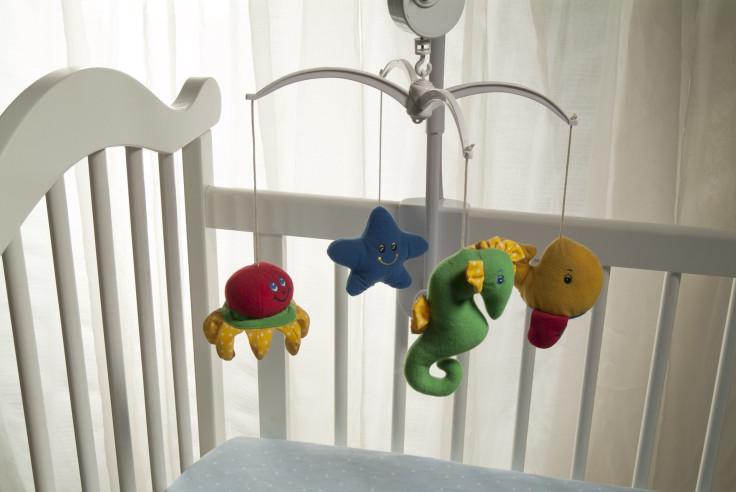Baby Cribs Are No Place For Certain Items, 55% Of Parents Put Newborns At Risk Of SIDS

Your baby’s favorite stuffed animal, fuzzy blanket, or fluffy pillow can become a dangerous item in the crib. Doctors have been telling parents for years about the increased risk of sudden infant death syndrome (SIDS) their babies face when lying with bedding, but a new study reports most don’t heed the warning. The National Institutes of Health (NIH) collaborated with the Centers for Disease Control and Prevention (CDC) to survey thousands of caregivers and compare it to past research.
"Parents have good intentions but may not understand that blankets, quilts, and pillows increase a baby's risk of SIDS and accidental suffocation," said the study's co-author Carrie Shapiro-Mendoza, a senior scientist at the CDC's Division of Reproductive Health in Atlanta, in a press release.
Out of the 20,000 caregivers surveyed between 2008 and 2010, 54.7 percent still place their babies in a crib with bedding. "Bedding use for infant sleep remains common despite recommendations against this practice," the study authors wrote. The good news is the rates are much lower than they used to be. From 1993 to 1995, 85.9 percent of caregivers admitted to making the same bedtime mistake of leaving blankets and other objects in the crib. The data they analyzed came from the National Infant Sleep Position Survey, and their findings were published in the journal Pediatrics.
"Interestingly, we also observed a greater decline in bedding use over the infants (quilts/comforters and thick blankets) compared with bedding (blankets) under infants," the study’s authors wrote. "This finding raises a concern that parents may incorrectly perceive the recommendations as only pertaining to items covering or around the infant, and not include items under the infant."
SIDS is a frightening and looming possibility for new parents. It’s the leading cause of death among infants aged 1 month to 1 year, according to Kids Health. Every year 2,500 infants die of SIDS in the United States. It is a parent’s worst nightmare to look into their babies crib and find them not breathing. Even though it remains an unpredictable cause of death, experts say the risk can be greatly reduced by making an optimal sleeping situation. The safest way to put babies into bed is to lay them on their back without a pillow, blanket, or other form of bedding. It seems there's either a lack of communication between the doctor and caregiver or the bedding recommendations aren’t being taken seriously enough.
"Parents receive a lot of mixed messages," said the study’s co-author Marian Willinger, special assistant for SIDS at the NIH's Eunice Kennedy Shriver National Institute of Child Health and Human Development, in a press release. "Relatives may give them quilts or fluffy blankets as presents for the new baby, and they feel obligated to use them. Or they see magazine photos of babies with potentially unsafe bedding items. But babies should be placed for sleep on a firm, safety approved mattress and fitted sheet, without any other bedding."
Source: Shapiro-Mendoz CK, Willinger M, et al. Pediatrics. 2014.



























